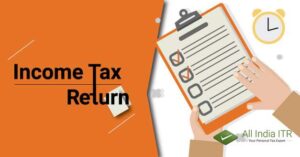 Salaried taxpayers having non-business income are generally required to file their returns in Form ITR 1/ITR 2
Salaried taxpayers having non-business income are generally required to file their returns in Form ITR 1/ITR 2
The Central Board of Direct Taxes (CBDT) notifies forms to be used for ITR filing by various categories of taxpayers annually. In line with this practice, the CBDT had recently notified the ITR forms (Forms ITR 1 to ITR 7) for individual, corporate, and other taxpayers for the financial year (FY) 2020-21 (April 2020 to March 2021), corresponding to assessment year (AY) 2021-22.
Salaried taxpayers having non-business income are generally required to file their returns in Form ITR 1 / ITR 2. There are a few changes to the eligibility criteria for filing either return as compared to the preceding tax year (i.e., FY 2019-20).
Form ITR 1 (Sahaj): The individuals being Resident and Ordinarily Resident (ROR) are required to file the tax return in Form ITR 1 in case they:
-have income from salary / pension, house property, other income (not being winnings from lottery/ income from race horses) up to Rs 50 lakh;
-do not have brought forward/ carry forward losses;
-are not Directors in a company or have not invested in unlisted equity shares;
-do not have any foreign assets and foreign income;
-are otherwise not required to file return of income but have to do so in view of 7th proviso to Section 139(1) of the Income Tax Act, 1961 ‘the Act’ (i.e. where return is required to be filed when certain conditions are met);
-have agricultural income up to Rs 5,000 only;
-do not have TDS deducted under section 194N of the Act or no income-tax is deferred on ESOP.
Form ITR 2: Individuals who are not eligible to file Form ITR 1 and individuals having income under any head other than business or profession can file their India tax return in Form ITR 2.
Key changes
Mainly the changes in the ITR 1 and ITR 2 are due to amendment in law / provisions effective from / for FY 2020-21. The key changes to the individual income tax return Forms ITR 1 (SAHAJ) and ITR 2 are as under:
Common changes in Form ITR 1 and ITR 2
-A field has been inserted wherein the taxpayer has to select if they are opting for new tax regime u/s 115BAC (i.e. taxes to be paid at lower tax rates without claiming the specified deductions / exemptions). If the taxpayers wish to continue to pay the taxes as per the existing tax rates and claim the specified deductions / exemptions, they will have to select “No” against the said field.
-Schedule DI (Details of investment) has been removed since the same was applicable only for FY 2019-20, i.e. providing details of investment made during April 2020 to July / September 2020 but claimed in FY 2019-20 in respect of
-Tax saving investments eligible for deduction under part B of chapter VIA (such as deduction under section 80C, 80D, 80G of the Act etc.) (due date being July 2020);
-Payment for acquisition /purchase /construction of property for the purpose of claiming capital gain exemption under section 54 to 54GB of the Act (in Form ITR 2).
Please note that the deduction in respect of the investment/ deposit/ payments for the period April 2020 to July 2020 / September 2020 cannot be claimed again, if already claimed in FY 2019-20.
-From FY 2020-21 onwards, the incidence of tax has been passed from the relevant company / mutual fund to the recipient of dividend, i.e. shareholders / unit holders. Accordingly, dividend earned on equity shares and equity oriented mutual funds will be considered as taxable in the hands of the taxpayers at normal slab rates. In this context, the Forms have been amended to indicate breakup of dividend received in different advance tax instalments for the calculation of interest under section 234C of the Act.
Change specific to Form ITR 2
-While computing tax liability on total income, a bifurcation of surcharge before and after marginal relief is now provided which will enable ease of calculation and presentation in the Form.
Conclusion
The timely publication of the new forms ensures that individuals have sufficient time to collate the necessary information that needs to be reported.
Source: https://www.moneycontrol.com/news/business/personal-finance/new-income-tax-return-forms-notified-heres-your-guide-to-choosing-the-right-itr-6791271.html
© 2018 CA Chandan Agarwal. All rights reserved.